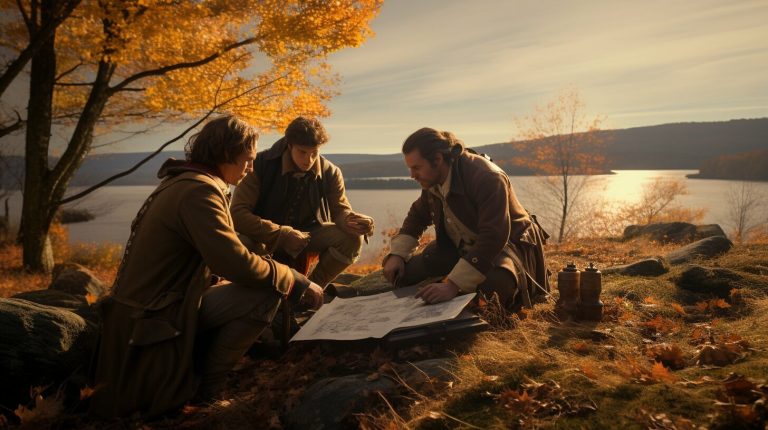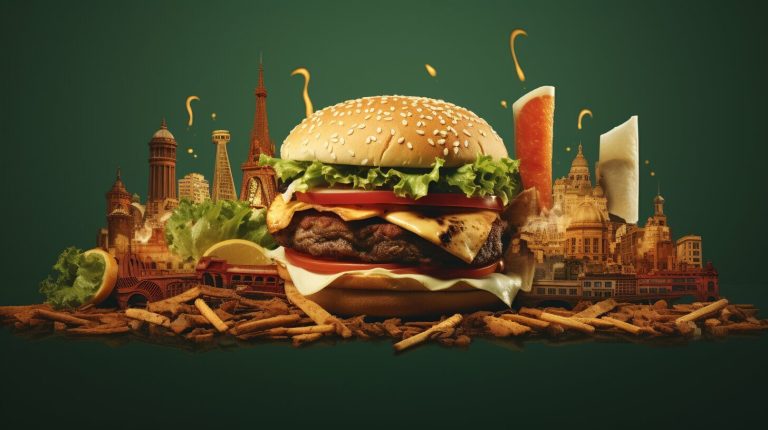Unraveling Why Seattle is Called the Emerald City
Seattle, often referred to as the Emerald City, has a captivating nickname that reflects its natural beauty and lush green landscapes. This enchanting moniker was chosen in a contest held in 1981 and has since become synonymous with Seattle’s identity. But why is Seattle called the Emerald City? Let’s explore the origins and significance of this nickname.
Key Takeaways:
- Seattle is known as the Emerald City due to its abundant greenery and evergreen trees that stay green throughout the year.
- The nickname was chosen in a contest held in 1981, highlighting the natural beauty of Seattle.
- Prior to being known as the Emerald City, Seattle had other nicknames such as “Jet City” and “Queen City of the Pacific Northwest”.
- The nickname also aligns with Washington State’s nickname as the Evergreen State.
- Contrary to popular belief, Seattle is least green during the summer when rainfall is less frequent and many locals opt for brown lawns instead of watering them.
Seattle’s Lush Green Landscapes and Evergreen Connection
One of the primary reasons Seattle earned the nickname “Emerald City” is due to its breathtaking green landscapes, featuring lush forests and evergreen trees that thrive in the region. These verdant landscapes contribute to the city’s unique charm and have become a defining characteristic of Seattle’s identity.
In Seattle, you don’t have to venture far to immerse yourself in nature’s stunning beauty. The city is surrounded by an abundance of green spaces, from sprawling parks to dense forests that offer a haven for outdoor enthusiasts and nature lovers alike. The iconic evergreen trees, such as the majestic Douglas Fir and Western Hemlock, add to the city’s picturesque scenery throughout the year.
The connection between Seattle’s nickname and the popular story of the Wizard of Oz is also worth mentioning. Just like Dorothy’s journey to the Emerald City in search of something precious, visitors and residents alike are drawn to Seattle’s vibrant landscapes, hoping to uncover their own hidden treasures within the city’s emerald embrace.
Seattle’s Lush Green Landscapes and Evergreen Connection
The lush greenery of Seattle not only provides stunning vistas but also plays a vital ecological role. The abundance of trees and plants contributes to the city’s clean air and acts as a natural filter for pollutants. The green landscapes also provide habitat for a diverse array of wildlife, making Seattle a haven for both humans and nature.
In a city known for its innovation, creativity, and forward-thinking, Seattle’s commitment to preserving its green spaces stands as a testament to its dedication to sustainability and environmental stewardship. The city continually strives to strike a balance between urban development and the preservation of its natural surroundings, ensuring that future generations can experience the same awe-inspiring green landscapes that have earned Seattle its nickname, the Emerald City.
| Interesting Fact: | Seattle’s nickname, the Emerald City, was officially chosen in a contest held in 1981. The selected name reflected the vibrant beauty of the city’s green landscapes and became a symbol of Seattle’s natural treasures. |
|---|
The Contest and Choosing “Emerald City”
Seattle, once known by other nicknames such as “Jet City” and “Queen City of the Pacific Northwest,” gained its iconic title of the Emerald City through a contest held in 1981. The search was on for a name that would capture the essence of Seattle’s lush green landscapes, and “Emerald City” emerged as the perfect fit.
The Origins of the Nickname
The nickname “Emerald City” holds deep significance for Seattle, representing the city’s thriving natural beauty and its status as a gem in the Pacific Northwest. The abundant greenery found throughout the region, particularly the evergreen trees that remain vibrant all year round, earned Seattle its distinct identity.
“Emerald City” reflects the stunning emerald-like landscapes that grace the city, creating a visual feast for residents and visitors alike.
The contest itself was a testament to the city’s sense of community and pride. The chosen nickname not only resonated with the locals but also aligned with Washington State’s nickname as the Evergreen State. It became a symbol of Seattle’s commitment to preserving its natural surroundings and fostering a sustainable environment.
A Jewel in the Pacific Northwest
Seattle’s Emerald City nickname encapsulates not only the physical beauty of the city but also its allure as a cultural and economic hub. The moniker evokes a sense of enchantment and wonder, drawing visitors from far and wide to explore the city’s vibrant neighborhoods, sprawling parks, and breathtaking waterfront views.
In summation, Seattle’s title as the Emerald City is not merely a nickname; it is a reflection of the city’s commitment to being a sustainable, nature-centric metropolis. So, the next time you find yourself wandering the streets of the Emerald City, take a moment to appreciate the lush green landscapes that surround you and marvel at the organic beauty of Seattle.
| Seattle’s Previous Nicknames | Year |
|---|---|
| Jet City | 1950s-1960s |
| Queen City of the Pacific Northwest | 19th century-early 20th century |
Seattle’s Rainy Reputation and Brown Summers
Contrary to its rainy reputation, Seattle’s natural beauty is at its peak during the non-summer months, as the rain tapers off and locals often opt for brown lawns rather than wasting water.
Seattle’s lush green landscapes truly come alive during the spring and fall seasons. The city’s abundant rainfall nourishes the earth, resulting in vibrant foliage and blossoming flowers. It’s a sight to behold, as the emerald hues of the trees and plants create a picturesque backdrop against the city skyline.
While the summer months may bring drier weather, it’s important to note that Seattle’s natural beauty doesn’t dwindle. In fact, this is when the city adopts a unique aesthetic. Many locals choose to embrace the natural cycles of the region and let their lawns turn brown. This not only conserves water but also allows the vibrant greenery to take center stage.
| Season | Weather | Seattle’s Natural Beauty |
|---|---|---|
| Spring | Plentiful rain | Vibrant green landscapes and blooming flowers |
| Summer | Less rain | Brown lawns that highlight the vibrant greenery |
| Fall | Plentiful rain | A symphony of autumn colors amidst the evergreen backdrop |
| Winter | Rain and occasional snow | Evergreen trees covered in a dusting of white |
So, the next time you visit Seattle, keep in mind that its beauty extends beyond the rainy days. Whether it’s the emerald landscapes of spring or the golden hues of fall, Seattle’s natural allure shines through all year round. Just like the Emerald City of Oz, Seattle truly lives up to its nickname as the jewel of the Pacific Northwest.
Conclusion
The nickname Emerald City not only represents the lush green landscapes of Seattle but also serves as a symbol of its natural beauty and prominence in the Pacific Northwest. Seattle’s abundant greenery, including its evergreen trees that remain verdant all year round, has earned it this vibrant moniker. The nickname was chosen through a contest held in 1981, emphasizing the importance it holds for Seattle’s identity.
Prior to being called the Emerald City, Seattle had other nicknames such as “Jet City” and the “Queen City of the Pacific Northwest.” However, the nickname Emerald City resonates with Washington State’s nickname as the Evergreen State, further solidifying Seattle’s connection to nature and its green landscapes.
Despite its reputation for rain, Seattle is actually least green during the summer months. Less frequent rainfall and locals opting for brown lawns instead of watering contribute to this surprising fact. Nevertheless, the nickname Emerald City remains a testament to the city’s overall natural beauty and its status as the jewel of the Pacific Northwest.
Seattle’s nickname not only captures the essence of its lush green landscapes but also reflects its prominence and allure in the region. As one of the most beautiful cities in the United States, the Emerald City stands as a haven for nature enthusiasts and a testament to the captivating wonders of the Pacific Northwest.
FAQ
Why is Seattle called the Emerald City?
Seattle is called the Emerald City because of its lush green landscapes, particularly the evergreen trees that stay green all year round.
How did Seattle get its nickname?
The nickname “Emerald City” was chosen in a contest held in 1981, highlighting the natural beauty of Seattle.
What other nicknames did Seattle have before “Emerald City”?
Seattle had other nicknames such as “Jet City” and “Queen City of the Pacific Northwest” before being known as the Emerald City.
Does the nickname have any connection to the Evergreen State?
Yes, the nickname Emerald City resonates with Washington State’s nickname as the Evergreen State, emphasizing the abundance of greenery in the region.
Is Seattle green all year round?
Contrary to popular belief, Seattle is actually least green during the summer, when the rain is less frequent and many locals choose to have brown lawns instead of watering them.
What does the nickname Emerald City say about Seattle’s identity?
The nickname reflects Seattle’s lush green landscapes and establishes it as the jewel of the Pacific Northwest, symbolizing its natural beauty and importance.
- Discovering Why Do Women Wear Lipstick: A Deeper Look - 19/12/2023
- Why Do Golfers Only Wear One Glove? - 16/12/2023
- Why Don’t Hobbits Wear Shoes? - 14/12/2023
Hi, I’m Rhiannon, the lead author behind The News Wire. As a passionate journalist, I strive to bring you the latest news and updates from all over the world. With a keen eye for detail and a dedication to unbiased reporting, I aim to deliver well-researched and informative articles that keep you informed and engaged. From breaking news to in-depth analyses, I cover a wide range of topics with the aim of keeping you in the loop. Join me on The News Wire as we explore the dynamic and ever-changing landscapes of global events, uncovering the stories that matter most.






